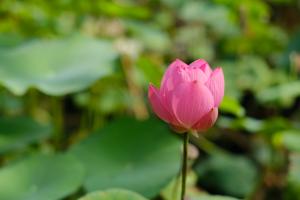Introduction
Planting trees is essential for a sustainable future. Trees not only provide oxygen, but they also improve air quality, support wildlife, preserve soil, and combat climate change. However, there are certain regions where planting trees is not always feasible. One such place is Arizona.
The Hot and Dry Climate of Arizona
The hot and dry climate of Arizona is one of the primary reasons why planting trees can be a challenge. The state has a desert climate with low rainfall, which makes it difficult for trees to thrive. Moreover, the temperatures can reach up to 120 degrees Fahrenheit in the summer months, which can severely damage trees. Due to these conditions, only certain types of trees can survive in Arizona.
The Problem of Drought
Another challenge for planting trees in Arizona is the problem of drought. The state gets very little rainfall, and the water resources are limited. Therefore, trees require irrigation to grow, which adds to the cost of planting trees. Moreover, the water that is used for irrigation is often sourced from underground aquifers, which are being depleted faster than they can recharge. This can lead to groundwater depletion and land subsidence, which can have long-term consequences for the state's water resources.
The Risk of Wildfires
Arizona is also at risk of wildfires. The state has a history of wildfires, and the risk is increasing due to climate change. Planting trees in certain areas can increase the risk of wildfires, especially if the trees are not native to the region. Non-native trees can be more vulnerable to diseases and pests, which can increase the risk of wildfire. Therefore, planting trees in certain regions of Arizona requires careful consideration and planning.
Solutions for Planting Trees in Arizona
Despite the challenges of planting trees in Arizona, there are some solutions that can help. One solution is to plant native trees that are adapted to the hot and dry climate of the region. Native trees require less water and are more resistant to diseases and pests, which can reduce the risk of wildfires. Moreover, planting native trees can support the local ecosystem and preserve biodiversity.
Another solution is to use drip irrigation instead of traditional irrigation methods. Drip irrigation can save water and reduce the cost of irrigation. Moreover, using recycled water for irrigation can also reduce the cost and demand for fresh water resources.
Lastly, incorporating trees in urban landscapes can also have several benefits. Planting trees in cities can improve air quality, reduce the urban heat island effect, and provide shade for pedestrians and cyclists. Moreover, planting trees along streets can also improve the aesthetic value of the city and increase property values.
Conclusion
In conclusion, planting trees is crucial for a sustainable future, but it can be a challenge in certain regions, such as Arizona. The hot and dry climate, the problem of drought, and the risk of wildfires require careful consideration and planning when planting trees. However, by using native trees, drip irrigation, and incorporating trees in urban landscapes, it is possible to overcome these challenges and promote a greener future for Arizona.

 how many times do yo...
how many times do yo... how many planted tre...
how many planted tre... how many pine trees ...
how many pine trees ... how many pecan trees...
how many pecan trees... how many plants comp...
how many plants comp... how many plants can ...
how many plants can ... how many plants and ...
how many plants and ... how many pepper plan...
how many pepper plan...






























